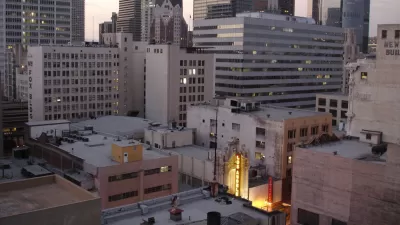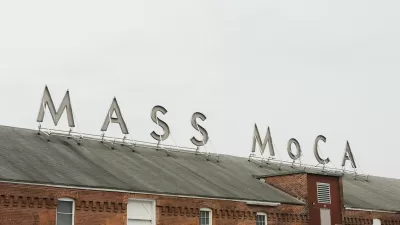With the building more than half vacant, the new owners of the Tower Life Building plan to convert the historic tower into residences that could include affordable housing.

A historic San Antonio office building is set to be redeveloped into housing with mixed-use facilities on the street level, reports Iris Dimmick for the San Antonio Report.
According to Dimmick, “While full details of the building renovation and unit rental prices are pending, according to building owners, the initial plan is to convert the office space into 234 housing units, half of which could be reserved for households who make 80% or less than the area median income (AMI) and 23 of the units for households making 60% AMI.”
At present, San Antonio’s Tower Life building is only 40 percent occupied, and the retail space on the ground floor has been vacant for more than two decades. The plan is a harbinger of the future of urban office buildings, many of which will likely be converted into housing as demand for physical office space falls and the housing shortage grows.
The plan to revitalize the building calls for removing the concrete barrier that blocks access to San Antonio’s River Walk, which at the time of the building’s construction in 1929 was still an untamed river that posed flood risk. Today, the River Walk is downtown San Antonio’s main attraction.
FULL STORY: Tower Life Building adding residential, may include affordable housing

Manufactured Crisis: Losing the Nation’s Largest Source of Unsubsidized Affordable Housing
Manufactured housing communities have long been an affordable housing option for millions of people living in the U.S., but that affordability is disappearing rapidly. How did we get here?

Americans May Be Stuck — But Why?
Americans are moving a lot less than they once did, and that is a problem. While Yoni Applebaum, in his highly-publicized article Stuck, gets the reasons badly wrong, it's still important to ask: why are we moving so much less than before?

Using Old Oil and Gas Wells for Green Energy Storage
Penn State researchers have found that repurposing abandoned oil and gas wells for geothermal-assisted compressed-air energy storage can boost efficiency, reduce environmental risks, and support clean energy and job transitions.

Updating LA’s Tree Rules Could Bring More Shade to Underserved Neighborhoods
A new USC study finds that relaxing Los Angeles’ outdated tree planting guidelines could significantly expand urban tree canopy and reduce shade disparities in lower-income neighborhoods, though infrastructure investments are also needed.

California's Canal Solar Projects Aim to Conserve Resources and Expand Clean Energy
California’s Project Nexus has begun generating electricity from solar panels installed over irrigation canals, with researchers and state agencies exploring statewide expansion to conserve water and boost clean energy production.

HHS Staff Cuts Gut Energy Assistance Program
The full staff of a federal program that distributes heating and cooling assistance for low-income families was laid off, jeopardizing the program’s operations.
Urban Design for Planners 1: Software Tools
This six-course series explores essential urban design concepts using open source software and equips planners with the tools they need to participate fully in the urban design process.
Planning for Universal Design
Learn the tools for implementing Universal Design in planning regulations.
Heyer Gruel & Associates PA
City of Moreno Valley
Institute for Housing and Urban Development Studies (IHS)
City of Grandview
Harvard GSD Executive Education
Salt Lake City
NYU Wagner Graduate School of Public Service
City of Cambridge, Maryland





























